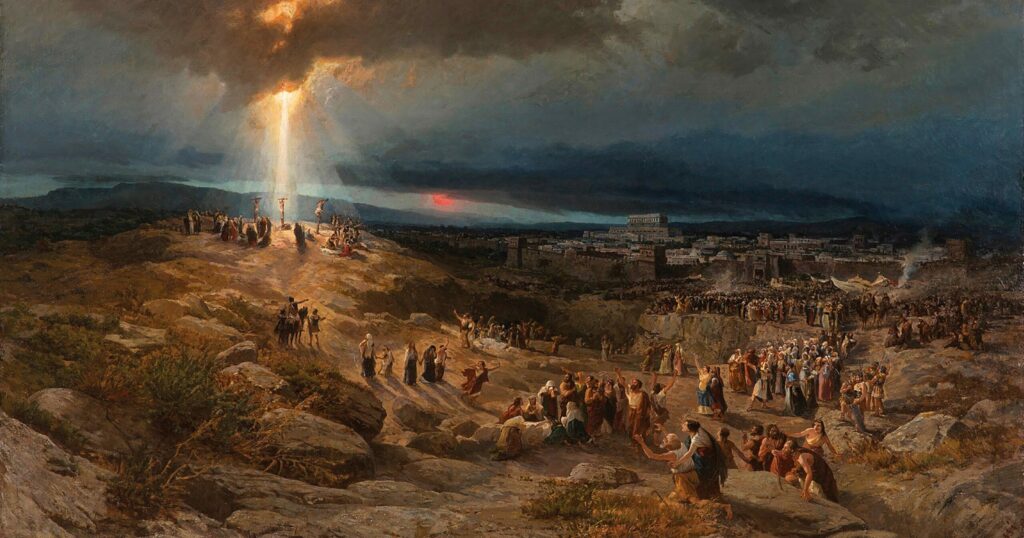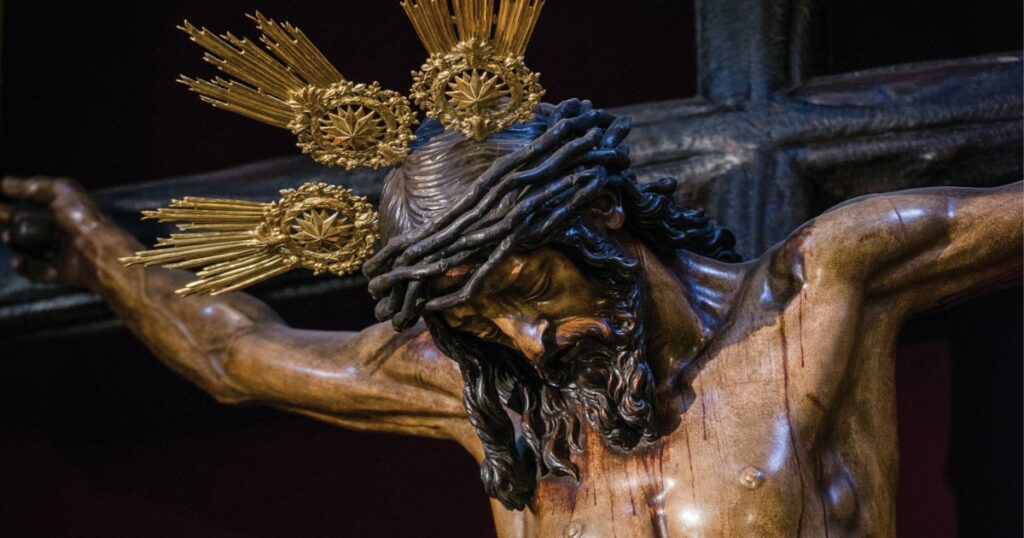By Brian T. German
Read Isaiah 2 and 13:6–13 and Luke 23:26–56.
The Old Testament is saturated with special days. The creation of humanity certainly makes the list (Gen. 1:26–27), as does God’s day of rest (Gen. 2:2–3). The day the Israelites were brought out of Egypt was to be remembered throughout the generations (Ex. 13:3), along with the day that the temple was consecrated (1 Kings 8) — and rebuilt (Ezra 3). And who could forget the day the sun stood still (Joshua 10:14)?
But the prophets also speak of a special day that the Lord calls His very own, a day unlike any other that God’s people across the ages have aptly called “the day of the Lord.” Isaiah describes it like this:
For the Lord of hosts has a day against all that is proud and lofty, against all that is lifted up — and it shall be brought low; against all the cedars of Lebanon, lofty and lifted up; and against all the oaks of Bashan; against all the lofty mountains, and against all the uplifted hills; against every high tower, and against every fortified wall; against all the ships of Tarshish, and against all the beautiful craft. And the haughtiness of man shall be humbled, and the lofty pride of men shall be brought low, and the Lord alone will be exalted in that day. And the idols shall utterly pass away. And people shall enter the caves of the rocks and the holes of the ground, from before the terror of the Lord, and from the splendor of His majesty, when He rises to terrify the earth. In that day mankind will cast away their idols of silver and their idols of gold, which they made for themselves to worship, to the moles and to the bats, to enter the caverns of the rocks and the clefts of the cliffs, from before the terror of the Lord, and from the splendor of His majesty, when He rises to terrify the earth.
Isaiah 2:12–21
The day of the Lord is both comprehensive (“against all that is proud and lofty”) and alarmingly specific (“against all the oaks of Bashan”). It covers realms that are intangible (“haughtiness”) and tangible (“the caverns of the rocks”). Isaiah tells us in another chapter that this day will rattle the entire cosmos; the sun, the moon and the stars will stop working correctly. The whole earth will shake and tremble, along with each body and soul; hearts will melt and hands will fail (see Isaiah 13:6–13). Joel stresses that the day of the Lord is coming and is actually quite near (see Joel 2). Zephaniah summarizes it in this way: “A day of wrath is that day, a day of distress and anguish, a day of ruin and devastation, a day of darkness and gloom, a day of clouds and thick darkness” (Zeph. 1:15).
With all this in mind, consider carefully how Luke introduces the account of Jesus’ death: “It was now about the sixth hour, and there was darkness over the whole land until the ninth hour, while the sun’s light failed” (Luke 23:44–45, emphasis added). The brightest part of the day was covered by thick darkness. The sun was no longer working. The entire land was affected. Matthew adds that “the earth shook, and the rocks were split” (Matt. 27:51). There was shaking and trembling under the feet and within the chest, as the people who witnessed these things “returned home beating their breasts” (Luke 23:48). Hearts melted. Faces were gloomy. In the crucifixion of Jesus, the day of the Lord had come.
But there is more to say. Fascinatingly, other books of the New Testament speak of the day of the Lord as still coming, pressing us to ponder even more deeply just how special this particular day is. “The day of the Lord will come like a thief in the night,” Paul writes in 1 Thessalonians 5:2, and other passages follow suit (e.g., 1 Cor. 5:5; 2 Peter 3:10). Somehow the day of the Lord has already come, even as it also will come. How is this possible?
The answer is in Good Friday. This day is none other than the great and awesome day spoken of by the prophets, a day in history and a day in eternity. In this day you will find past, present and future all wrapped up together. When you behold the cross, you behold God’s end-times wrath pouring out into the present, even as you also behold the Lamb of God who is worshiped by angels, archangels and all the company of heaven. The cross puts the full future on display for every here and now. Little wonder that Zechariah called the day of the Lord “a unique day, which is known to the Lord” (Zech. 14:7).
In the cross you will indeed find “all that is proud and lofty,” as Jesus suffers for humanity’s pride and arrogance across all times and places. In this cross you will also find the entire cosmos groaning, as Jesus ushers in a new heaven and a new earth by His death. Before this cross people must take refuge either in “the caverns of the rocks” or in the cavern of the Rock, from which flow blood and water for our salvation (John 19:34).
This is why our Lord’s end-times preaching is found not at the end of the Gospels but before the events of Good Friday (see Matt. 24; Mark 13; Luke 21). The very worst of everything that is mentioned in these chapters — tribulation, calamities, distress — is embodied by Jesus on the cross. The coming of the Son of Man proclaimed in these chapters happens chiefly on Good Friday, even as He will come again to judge the living and the dead.
How fitting it is, then, that we call our day of worship “the Lord’s day” (Rev. 1:10). The list of special days in the Old Testament includes any day on which the Lord speaks His word (Deut. 26:16; Joshua 24:15; Neh. 8). This remains the case for the church today. Every Lord’s Day we hear and can even taste our final victory over sin, death and the devil, which was won by Christ’s work on the cross. Every Divine Service, the Lord’s great and awesome day comes near for our sake, drawing His faithful to Him and ushering them into a world without end.

This article originally appeared in the April 2025 issue of The Lutheran Witness.





